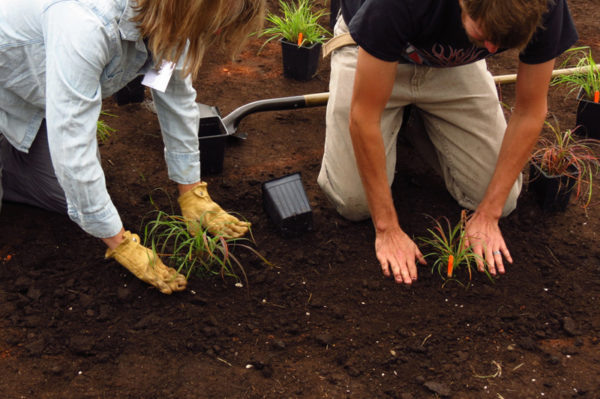You can help stop wildlife loss. Here’s how
WWF’s new Living Planet Report Canada, is a wakeup call. It shows that half the monitored wildlife studied are in decline, and their population numbers have dropped on average 83 per cent since 1970. Even the wildlife federally protected by the Species at Risk Act aren’t spared.
We can all embrace this challenge, and together reverse the decline of wildlife in Canada. Communities. Industry. Governments. And you.
We don’t yet have all the data required to know how to most effectively target conservation actions to make a measurable difference for the wildlife that need it most. But the evidence shows us that when we do act, we can make a difference. Our individual actions, collectively, can have a big impact – Canadians from coast to coast to coast have a role to play. This means you, by getting involved in citizen science through community-based monitoring of water quality and aquatic species, restoring habitat and even protecting nesting and spawning sites for turtles, fish, birds, butterflies and bees.
And all across Canada, hundreds of community groups are taking actions such as these to stop wildlife loss. Here are just a few examples. Join them if you can.
IN THE PACIFIC REGION
Mainstreams Environmental Society (Columbia Basin, B.C.)
Works with nine organizations to monitor streams within each of their communities, leading to better water stewardship and remedial action where needed.
Living Lakes Canada (Columbia Basin, B.C.)
Works with volunteers on wetland restoration including invasive weed pulls and planting vegetation that helps with storm water treatment.
Salt Spring Island Conservancy (B.C.)
Is creating as many as six new wetland areas on a former golf course; will be looking for volunteers to help plant 4,000 native species in October.
SeaChange Marine Conservation Society (Salish Sea, B.C.)
Engages 20 coastal communities in nearshore habitat restoration by planting native eelgrass (zostera marina) across 40 restoration sites.
IN THE PRAIRIE REGION
Central Athabasca Stewardship Society, Tawatinaw Watershed Stewards and Green Foundation (Upper Athabasca Basin, Alta.)
Seeks volunteers to help with monitoring of benthic invertebrates and chemistry in waters and sediment in the first week of October.
Lake Winnipeg Foundation (Manitoba)
Trains and equips volunteers to collect water samples to identify phosphorus hotspots causing algae blooms and eutrophication in Lake Winnipeg, so they can work with government and other stakeholders to take action.
Society of Grassland Naturalists (Medicine Hat, Alta.)
Work with volunteers and the City of Medicine Hat to remove noxious weeds such as baby’s breath and leafy spurge that are choking grassland habitats and riparian areas upon which many species of prairie songbirds depend.
IN THE CENTRAL REGION
WWF-Canada and Carolinian Canada (Southern Ontario)
Engage gardeners living in the Carolinian Zone, home to one-third of Canada’s at-risk species, in creating habitat for native wildlife by planting native species on their properties, through In the Zone.
WWF-Canada and the St. Lawrence Global Observatory (coasts of Quebec and Atlantic Canada)
Launched eCapelin.ca, a citizen science tool to monitor capelin, a tiny forage fish which is an essential Food source for many other species such as Atlantic cod, seals, seabirds and whales.
WWF-Canada and Living Lakes (Ottawa, Ont. and Sunshine Coast, B.C.)
In partnership with universities and government, working with citizens to collect water samples to develop a better understanding of our water health by filling gaps in data.
IN THE ATLANTIC
Stratford Area Watershed Improvement Group (P.E.I.)
Holding an event this fall to help residents along the watershed build better backyards for local and migrating birds like tree swallows by providing them with bird box kits and training.
ACAP Cape Breton (N.S.)
Runs a water monitoring program where people can borrow a water quality monitoring probe, get trained on how to use it, and measure on their own time key indicators such as dissolved oxygen, conductivity, PH and temperature.
Clean Foundation and TD Friends of the Environment Foundation (N.S.)
Will plant 150 native trees in the riparian zone of Morris Lake Brook in Dartmouth on September 24, 2017 from 1 p.m. to 4 p.m.
Blue Nose Coastal Action Foundation (N.S.)
Looking for volunteers this fall to help them create rain gardens in the Chester area, which serve the dual purpose of managing storm water and creating important habitat for pollinators and other wildlife.
Clean Annapolis River Project (N.S.)
Equips volunteers with kits and measuring equipment to protect wood turtles by monitoring sites for nesting activity and predator exposure.
ACAP Saint John (Bay of Fundy and Saint John River, N.B.)
Needs volunteers on Sept. 30 to plant native vegetation and remove invasive vegetation on the Coast of the Bay of Fundy, and to help restore the Saint John river bank by remediating culverts, planting riparian vegetation and daylighting rivers.
Petitcodiac Watershed Alliance (Petitcodiac River Watershed, N.B.)
Looking for volunteers to help remove debris and pollutants from local streams along the watershed, which will benefit multiple species including the threatened Wood Turtle.
IN THE ARCTIC
The Yukon River Inter-Tribal Watershed Council (Yukon River Basin, Yukon)
Supports Indigenous communities to monitor water quality so they can make informed decisions about solid waste and avoid contamination of ground or surface water.
WWF-Canada (N.W.T. and Nunavut)
Working with community-based Hunters and Trappers Committees to lead clean-ups and tackle waste management challenges at remote and culturally significant camps along the coast.


